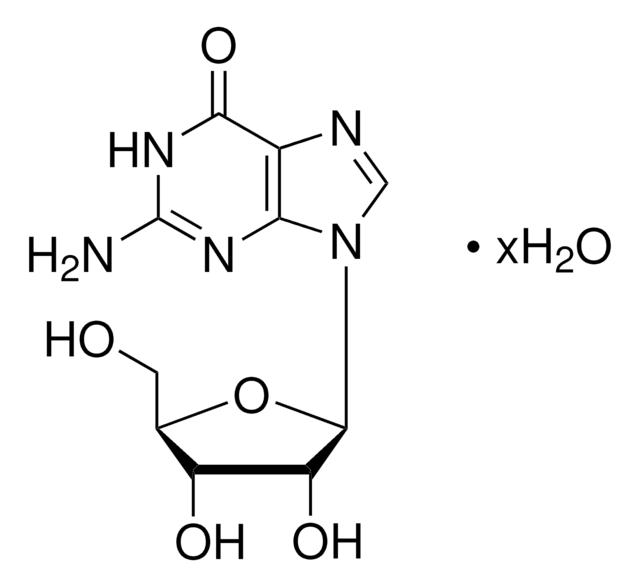Kluczowe dokumenty
51060
Guanosine 5′-diphosphate disodium salt
≥90% (HPLC)
Synonim(y):
5′-GDP-Na2
About This Item
Polecane produkty
pochodzenie biologiczne
Porcine brain
microbial (Corynebacterium sp)
synthetic
Poziom jakości
Próba
≥90% (HPLC)
Formularz
powder
rozpuszczalność
H2O: 50 mg/mL, clear, colorless
Warunki transportu
dry ice
temp. przechowywania
−20°C
ciąg SMILES
[Na+].[Na+].NC1=Nc2c(ncn2[C@@H]3O[C@H](COP([O-])(=O)OP(O)([O-])=O)[C@@H](O)[C@H]3O)C(=O)N1
InChI
1S/C10H15N5O11P2.2Na/c11-10-13-7-4(8(18)14-10)12-2-15(7)9-6(17)5(16)3(25-9)1-24-28(22,23)26-27(19,20)21;;/h2-3,5-6,9,16-17H,1H2,(H,22,23)(H2,19,20,21)(H3,11,13,14,18);;/q;2*+1/p-2/t3-,5-,6-,9-;;/m1../s1
Klucz InChI
LTZCGDIGAHOTKN-LGVAUZIVSA-L
Powiązane kategorie
Opis ogólny
Zastosowanie
- in fluorescent metal nanoclusters selectivity of guanosine 3′-diphosphate-5′-di(tri)phosphate, ppGpp
- in screening of fluorescence emission of hypocrellin A-zinc complex
- as a component of assay buffers in the autoradiography of mice brain sections
Działania biochem./fizjol.
Kod klasy składowania
11 - Combustible Solids
Klasa zagrożenia wodnego (WGK)
WGK 3
Temperatura zapłonu (°F)
Not applicable
Temperatura zapłonu (°C)
Not applicable
Środki ochrony indywidualnej
Eyeshields, Gloves, type N95 (US)
Wybierz jedną z najnowszych wersji:
Masz już ten produkt?
Dokumenty związane z niedawno zakupionymi produktami zostały zamieszczone w Bibliotece dokumentów.
Klienci oglądali również te produkty
Nasz zespół naukowców ma doświadczenie we wszystkich obszarach badań, w tym w naukach przyrodniczych, materiałoznawstwie, syntezie chemicznej, chromatografii, analityce i wielu innych dziedzinach.
Skontaktuj się z zespołem ds. pomocy technicznej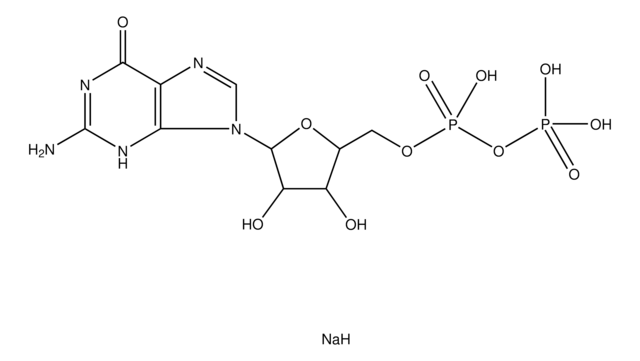

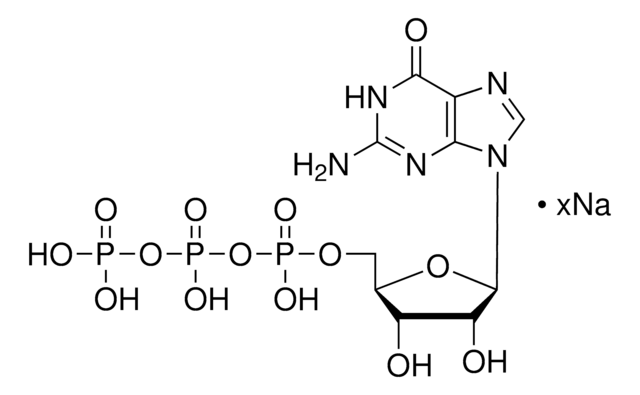
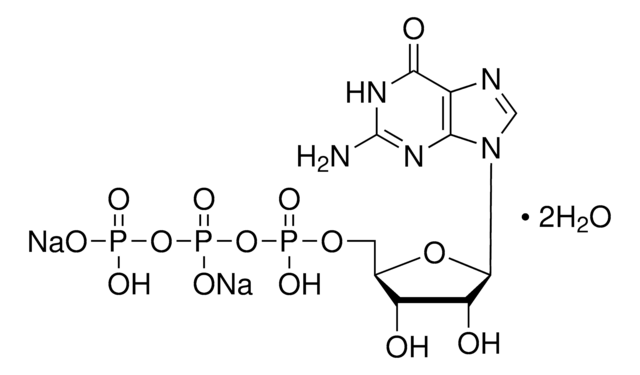





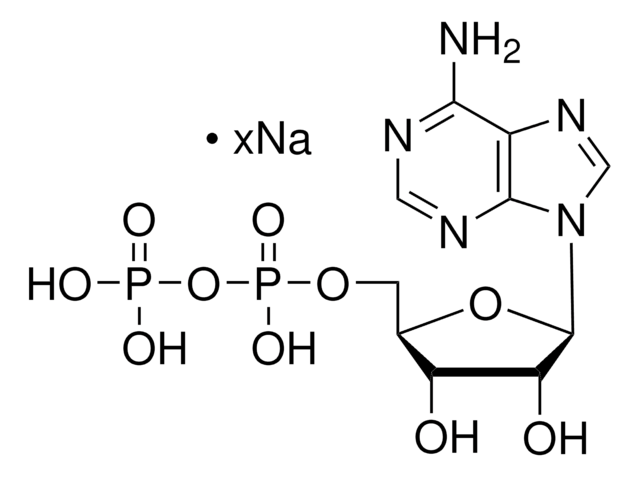
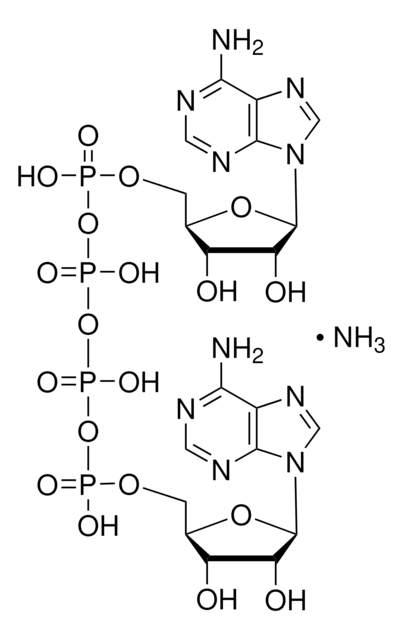
![Guanosine 5′-[γ-thio]triphosphate tetralithium salt ≥90% (contains < 10% GDP, HPLC), powder](/deepweb/assets/sigmaaldrich/product/structures/131/514/e3025b6a-cb52-4818-b20f-98efac485c1a/640/e3025b6a-cb52-4818-b20f-98efac485c1a.png)

